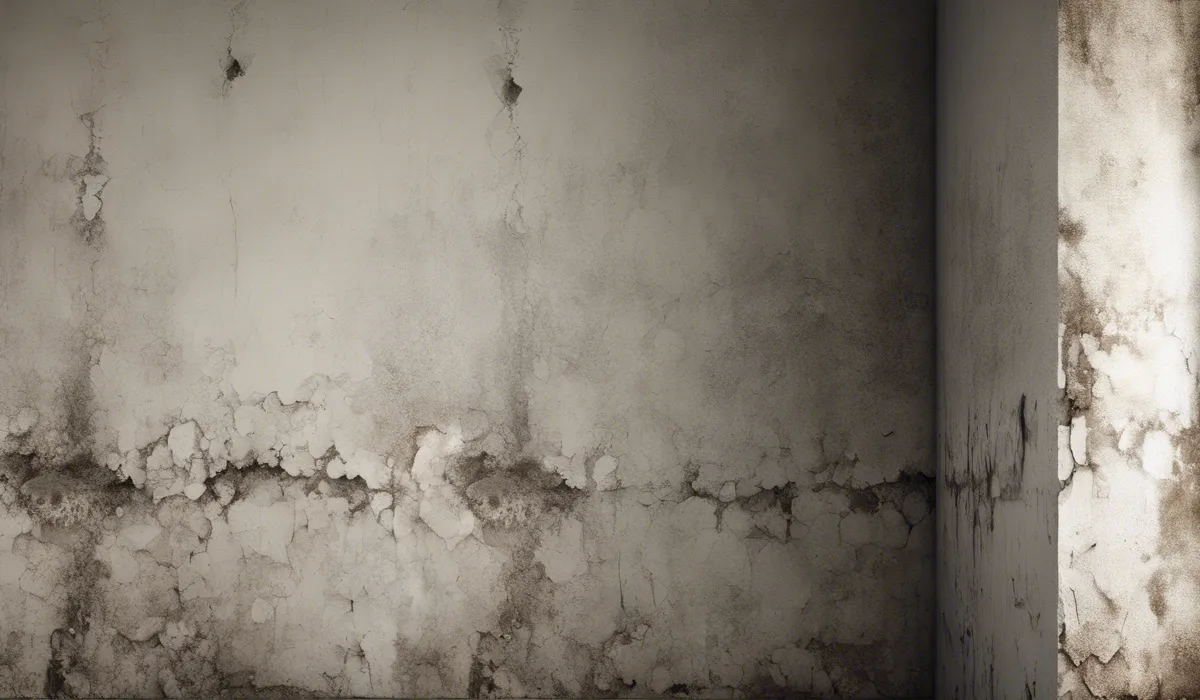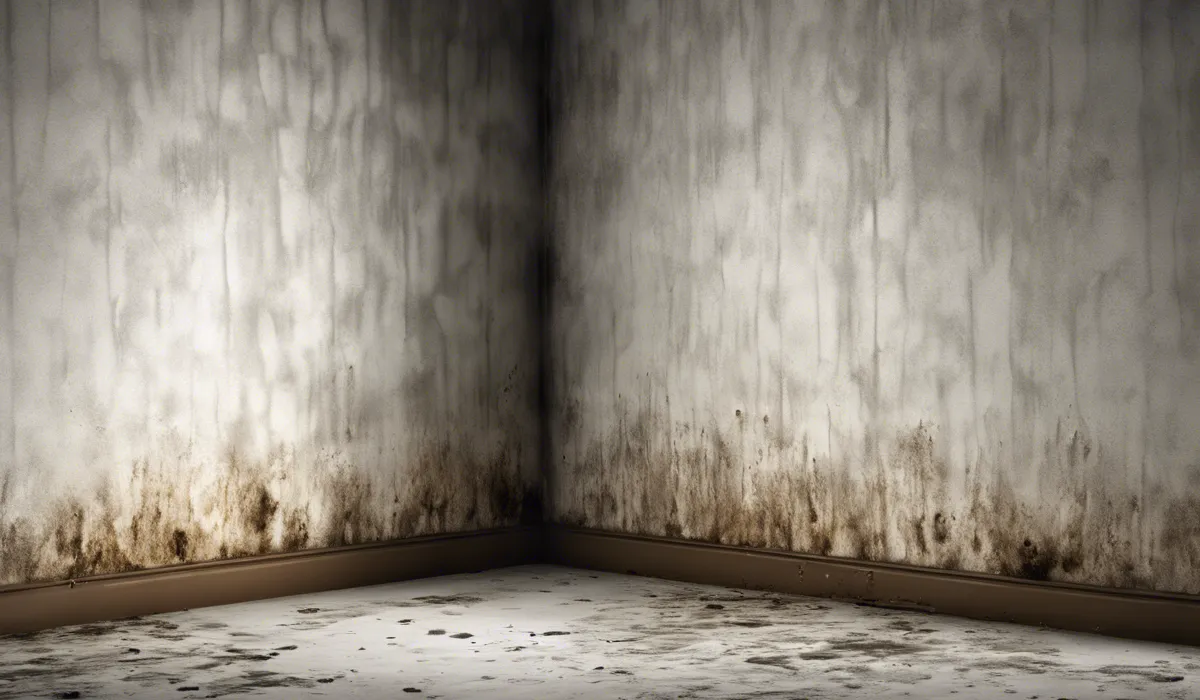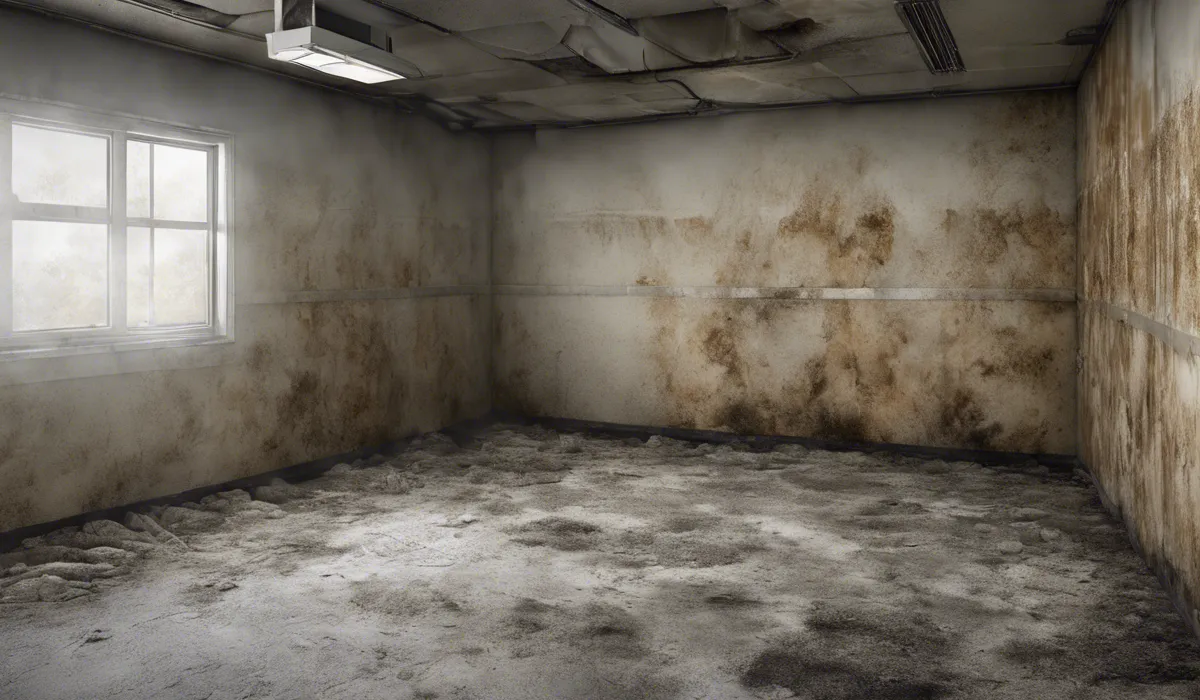Yes, mold behind walls can make you sick. It releases spores that cause allergic reactions, asthma attacks, and other respiratory issues. Prolonged exposure may lead to more severe health problems. It’s crucial to address hidden mold promptly.
Understanding Mold and Its Growth Behind Walls

What is Mold?
Mold is a type of fungus that can grow both indoors and outdoors. It thrives in warm, damp, and humid conditions.
In our homes, mold can be found in many forms, but the most common types include Cladosporium, Penicillium, Aspergillus, and Stachybotrys, often called black mold.
While molds themselves are not toxic, some produce harmful substances called mycotoxins.
Optimal Conditions for Mold Growth
For mold to grow behind walls, it needs moisture, a food source like drywall or insulation, warmth, and darkness.
These conditions can occur when there is poor ventilation, leaking pipes, or flooding. Once mold takes hold, it can remain hidden but active, damaging your home’s structure and potentially affecting your health.
Undetected Spread of Mold
Mold spreads by releasing spores into the air. These spores are so tiny that they can easily pass through small cracks or holes and settle behind walls.
Once there, they can remain undetected for a long time, continuing to grow and spread within the wall cavities.
Sources of Moisture
Moisture is the key factor in mold growth. Common sources include leaks from roofs, windows, or pipes, condensation buildup from temperature differences, and high humidity levels within the home.
It’s important to identify and fix these issues promptly to prevent mold from taking root.
Health Implications of Mold Exposure

Immediate Health Effects
When exposed to mold, some people might experience allergic reactions such as sneezing, runny nose, red eyes, and skin rash.
Asthma attacks can be triggered in people with asthma who are allergic to mold. Even in non-allergic individuals, mold spores can irritate the eyes, skin, nose, throat, and lungs.
Long-Term Health Risks
Long-term exposure to mold may lead to more serious health problems. It can cause persistent coughing, wheezing, and respiratory infections.
Some studies suggest that prolonged mold exposure may be linked to the development of asthma in children and immune system problems in adults.
Risks for Vulnerable Individuals
People with allergies, asthma, or compromised immune systems are at a higher risk of experiencing severe reactions to mold.
For these individuals, mold exposure can lead to more frequent and severe asthma attacks or infections such as pneumonia.
Recognizing Mold-Related Symptoms
It’s important to recognize the signs of mold-related health issues, especially if you can’t see the mold itself.
Symptoms to watch for include chronic coughing, sneezing, headaches, fatigue, and difficulty breathing. If you or your family members experience these symptoms without a clear cause, mold might be the culprit.
Prevention and Remediation Strategies

Preventing Mold in Your Home
Preventing mold growth is key. Keep your home dry and well-ventilated. Use dehumidifiers in damp areas and fix leaks as soon as they occur.
Make sure your home is properly insulated to prevent condensation on walls and windows.
Ventilation and Moisture Control
Good ventilation helps control moisture levels in your home. Use exhaust fans in bathrooms and kitchens to remove excess moisture.
Open windows when weather permits to allow for air circulation. Keep humidity levels in your home below 50% to discourage mold growth.
Finding Hidden Mold
If you suspect mold is growing behind your walls, look for signs such as musty odors, discoloration on walls or ceilings, and peeling paint or wallpaper. You may need to have a professional conduct a thorough inspection and testing to confirm the presence of mold.
Professional Remediation
Removing mold from behind walls is a job for professionals. They have the tools and expertise to safely remove mold without spreading spores throughout your home.
They will also address the source of moisture that allowed the mold to grow in the first place.
DIY Mold Cleanup
If you’re tackling small areas of mold yourself, wear protective gear such as gloves, goggles, and a mask.
Clean surfaces with a mold-killing solution, but remember that if the mold is extensive, professional remediation is safer and more effective.
FAQs About Mold Illness
Can mold hidden behind walls cause health issues?
Yes, mold behind walls can cause health issues by releasing spores that may lead to allergic reactions, asthma attacks, and respiratory problems.
What are the symptoms of mold exposure from behind walls?
Symptoms of mold exposure can include sneezing, coughing, watery eyes, skin irritation, and in severe cases, asthma exacerbation or respiratory infections.
How serious is prolonged exposure to mold behind walls?
Prolonged exposure to mold behind walls can lead to more severe health problems, including chronic respiratory conditions and immune system disorders.
Can mold behind walls affect individuals with no allergies?
Yes, even individuals without allergies can be affected by mold behind walls, as mold spores can irritate the respiratory tract and potentially cause health issues.
What should be done if mold is suspected behind walls?
If mold is suspected behind walls, it’s important to have a professional assess and remediate the issue to prevent health risks and structural damage.
Final Thoughts
Mold concealed behind walls is a health hazard that can cause a range of respiratory issues, including allergic reactions and asthma attacks.
The spores released by hidden mold are particularly dangerous and may lead to serious health complications over time. Addressing and removing hidden mold is essential for maintaining a safe and healthy living environment.
